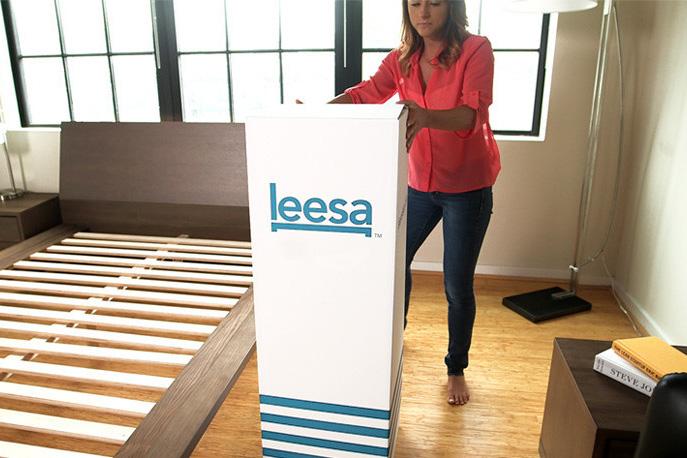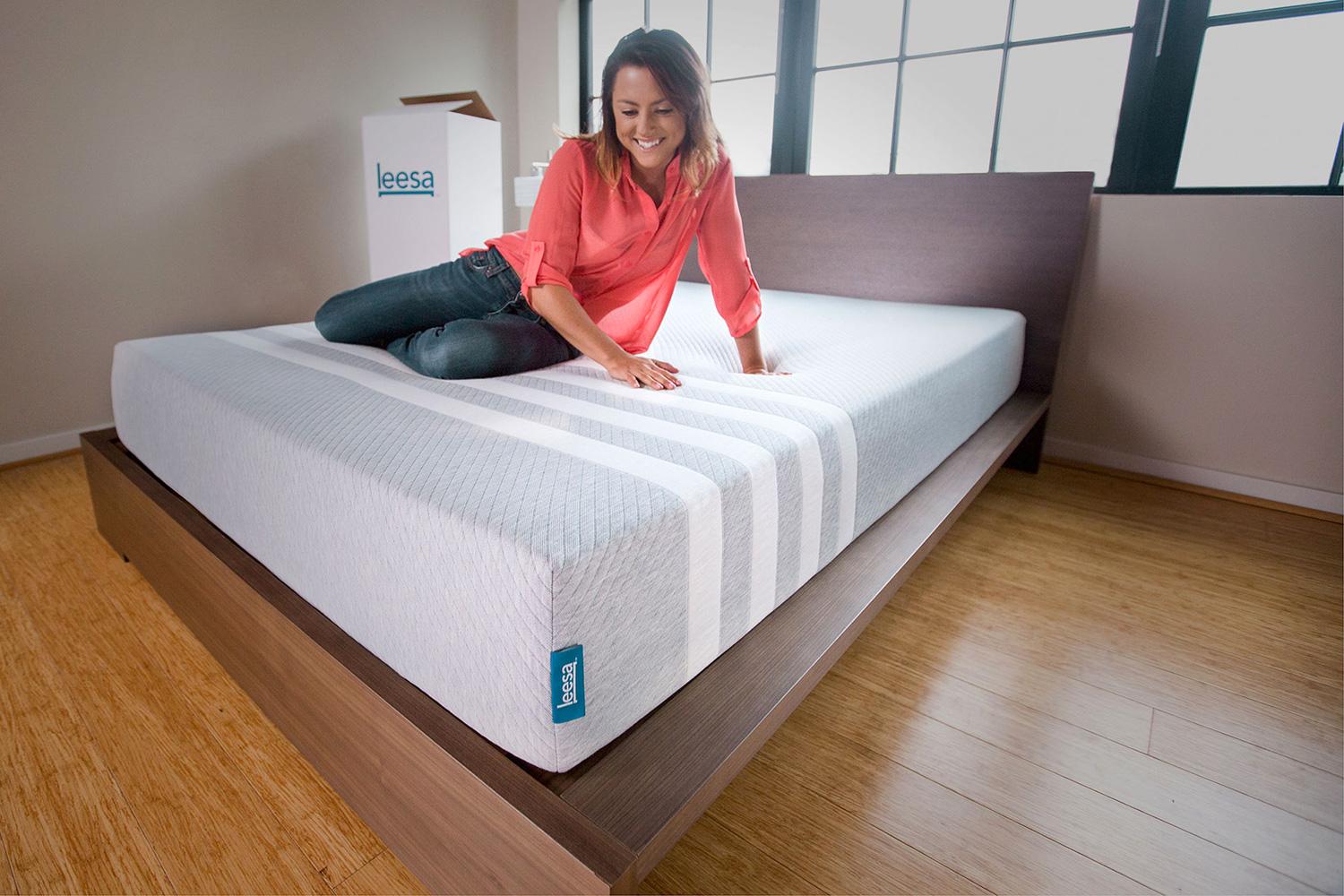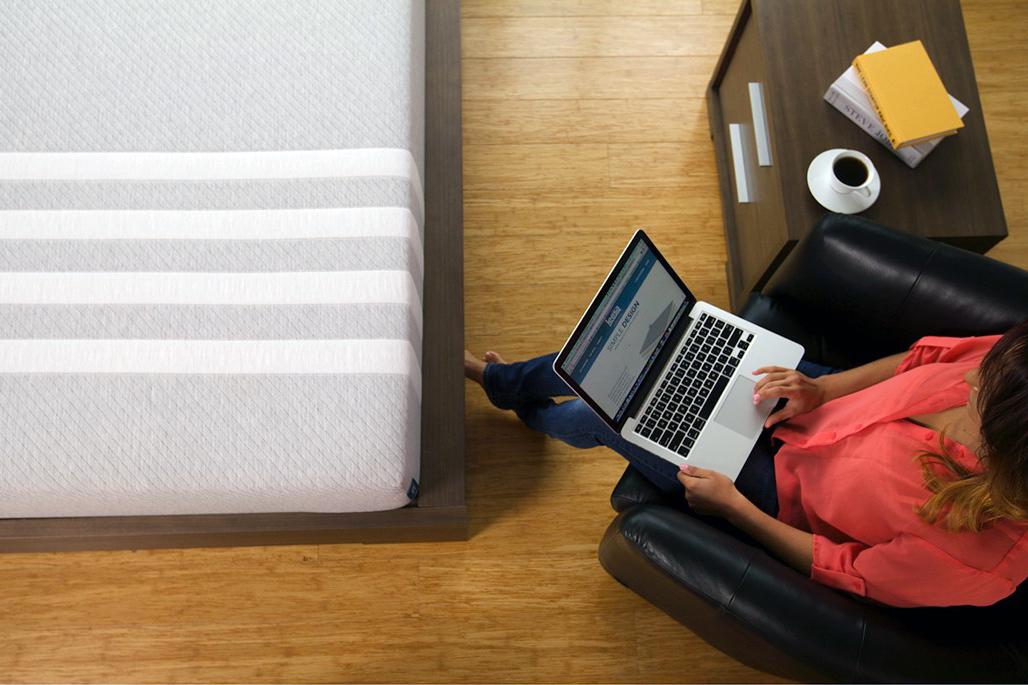Will you like the Leesa mattress? I don’t know, but you’ll have 100 days to find out.
One sure sign of adulthood is ditching the futon for a full-sized (or queen or king) bed. Whether you choose a race-car frame or sleigh bed, though, the mattress is what’s really going to determine how well you sleep from then on.
A study published in The Lancet in 2003 suggests that a medium-firm mattress helped reduce back pain better than a firm mattress, but right now, many sleep experts are taking the tack that the best mattress for you is mostly about personal preference. “Probably the most important thing is finding a mattress that is comfortable for your body and the support that you feel is comfortable,” says Dr. Gopal Allada of the Oregon Health and Sciences University Sleep Center.
With the rise of try-after-you-buy-but-return-for-a-full-refund mattresses, you can test out whether you like firmer foam something softer. Leesa is one such company, which gives 100 nights to figure out if its mattress is for you.
The unboxing
Just over a week after I ordered a full-size Leesa mattress, I found a 45-inch-tall box on my doorstep. I lugged it inside, cracked it open, and tugged out a roll of foam encased in plastic. After maneuvering it onto my bed, I hacked away at the packaging for a good 10 minutes, the foam began to unfurl, and I adjusted it onto the bed frame. There was a slight odor coming from the mattress when I first got it, but when I came back a few hours later, it was gone.

The grey polyester-lycra blend cover is soft and hides three layers of foam, each of which has its own function. The two-inch top layer, made of Avena foam, supposedly helps keep air flowing to the other layers, including the two-inch memory-foam middle layer. Below these two is a six-inch base of foam. No coils or springs here, just a soft yet firm rectangle of foam. It’s best to use the Leesa mattress with a platform bed or metal frame and foundation, according to the company, which doesn’t recommend you use it with a box spring. When I sat on the side of the bed, the mattress depressed about two inches, but when stretched out across the width, my spine stayed pretty straight, important for a side-sleeper like me.
Sleeping in
No coils or springs here, just a soft yet firm rectangle of foam.
Ignoring a warning from the booklet that the mattress wouldn’t reach its fully decompressed state for an hour post unpackaging and would take several days to become fully firm, I went ahead and slept on it the first night. The result was a bit of a sore back and a fiancé who also was complaining. The very next morning, however, neither of us awoke with any pain. Over the course of several weeks, we both decided the Leesa was a definite upgrade over our old $200 mattress. When we used a level to test how much each person getting up disturbed the other side of the bed, the number decreased by only 0.1 degrees. Our old mattress made the number bounce around by a whole degree. On mornings when I didn’t have an alarm clock waking me up, I also didn’t get shaken out of my slumber if my fiancé happened to get out of bed first.
Data from my sleep tracker didn’t reflect that I was necessarily getting a better sleep on the mattress; I wasn’t waking up less frequently or getting more sleep, for example.
100 nights
The one thing Leesa asks of its customers is that they don’t return their mattresses for 30 days. It takes a while for you to get used to a new sleeping setup, the company theorizes, so you shouldn’t be too hasty if you instantly hate the mattress. After that, you have another 70 days to decide to return it. Those 100 days (or nights, really) are far longer than what you’d get in a traditional mattress store, where salespeople watch you as you get horizontal on dozens of options.
“It probably is worthwhile staying on the mattress for 15 minutes and trying different positions that people usually sleep in and maybe bringing in their own pillow to simulate how it would be to own that mattress,” says Dr. Allada of anyone going bed-hunting in person.
Because the mattress arrives all compressed, there’s no way for you to get it back in its original packaging. Instead, should you decide the mattress is too firm or retains too much heat, you simply contact the Leesa team, and they’ll arrange to have someone take it away, often a local charity or recycling center. Because I accidentally ordered a second mattress (don’t ask), I was able to get the full effect of this service, and a customer service rep did indeed find a local charity to come take the mattress away.
The DT Accessory Pack
Up your game and the get the most out of your gear with the following extras, hand-picked by our editors:
SafeRest Premium Hypoallergenic Waterproof Mattress Protector ($30)
Sleep tight and don’t let the bed bugs bite with a mattress protector.
Classic Brands Conforma Memory Foam Pillow ($29.88)
What’s a quality mattress with a set of good pillows to go with it.
1500 Thread Count Egyptian Quality Duvet Cover ($30)
For those obsessed with thread count.
Conclusion
There isn’t a lot of scientific literature when it comes to what makes the best mattress, according to what Dr. Allada tells me. If you’re comfortable forgoing a traditional box-spring-and-pillowtop combo, you can save a lot of money just buying a standalone foam mattress. And since the whole experience is about what makes you fall asleep, and stay asleep, you might as well shop around. Leesa offers a hassle-free experience for both ordering and return. Yes, it cost about four times as much as a bargain-basement futon mattress, but we all have to grow up sometime.
Highs
- Firm but soft
- Easy to set up
- 100-day trial
- Good quality for the price
Lows
- Slight odor that dissipates
- Foam might not be for everyone






